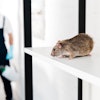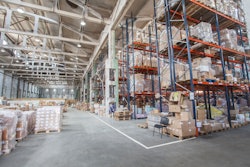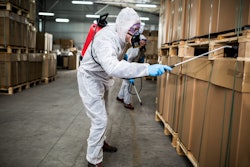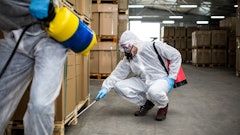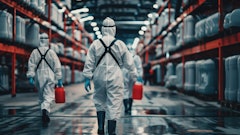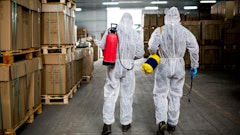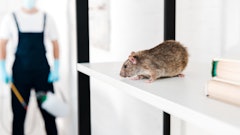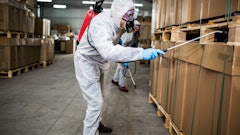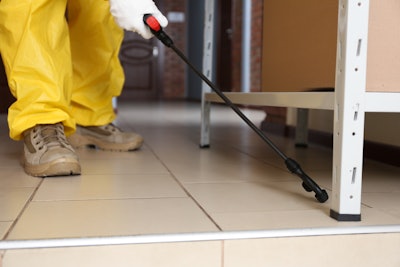
As one of the most powerful of the five senses, smell can be a great asset or threat to a facility. It is one of the determining factors of the type of business you may attract, even down to the unwanted kind: pests. Scent is a feature in every commercial property that can easily become an afterthought yet plays a major role in facility maintenance.
Regardless of a sanitation regimen, odors can originate from countless sources—garbage dumpsters and sewage drains naturally generate foul odors, for example. Because odors attract pests, managing scents within a facility is what helps make a difference in deterring a problem or infestation. To maintain a warehouse’s pest control program, it’s important to understand the types of pests that various odors can attract and the harm they can have on your goods, staff and consumers.
Pests have a keen sense of smell, so even if you don’t notice an odor, a pest may be able to. Because of this, it is important to locate an odor source and solve the scent problem—not just mask it or become nose blind to it. Neutralizing mild to foul odors quickly can prevent problems for your employees and a large pest infestation on your property.
Many logistics facilities have various access points for pests who are likely to find their way in seeking shelter and food sources, so the safety of staff, products and end-consumers should be a top priority. Odor control in your facility should also be a priority to reduce attractants that draw pests in, and therefore, help ensure product quality and maintain your bottom-line.
Odors Attract Warehouse Pests
Just because your facility doesn’t process food products doesn’t mean your business doesn’t offer food sources and enticing aromas to pests such as flies, cockroaches and rodents. These common warehouse pests thrive in human environments and are attracted to food odors and odor-producing waste such as garbage, sewage, carrion and feces.
Pests can become a costly problem for your business by not only destroying and contaminating your products, but also causing structural damage to your facility. These pests also carry harmful bacteria and diseases on their bodies that can be transmitted to those who encounter their droppings, urine and contaminated surfaces or products. Whether pests are hitchhiking in your transport, hiding in shipments or looking for a way in, it’s critical to keep them out. Beyond exclusion tactics that seal common pest entries, focus on maintaining a sanitary facility to help eliminate pest attractants.
Sanitation Best Practices
When you partner with a pest control provider, there are sanitation services and practices for your facility that can help keep these odors away and complement your pest control program when implemented successfully:
- Exterior trashcans and dumpsters can be a pest paradise if they aren’t properly maintained. Be sure you follow a regular sanitation schedule that keeps trash from building up or overflowing. And place your dumpsters as far away from the building as possible so that if pests hide out there, they will have a tougher time using it as an entry point to your facility.
- Break Rooms / Locker Rooms should be cleaned daily. Even the smallest crumbs can attract hungry insects. Make sure employees store their food in airtight containers and know to clean up spills and trash. Pests can also be brought in with employees’ personal items. Make sure lockers are cleared regularly to prevent pests from harboring and multiplying there.
- Storage areas are oftentimes an overlooked pest hazard. Because they are away from high-traffic areas, they can sometimes miss routine cleaning. In addition to implementing more routine cleanings, be sure to inspect all goods on the loading dock before bringing them into storage and store items in open shelving that is elevated from the floor. Always adopt a first-in, first-out rotation schedule to keep stored items from standing too long in one place.
- Floor drains can become a sanitation issue as well as a safe harborage for pests. In wet environments, microbial concerns pile up. In dry conditions, pests will camp out there if food debris collects in the drain. It’s ideal to equip your floor drains with a removable secondary strainer that can act as a barrier to keep pests out. It’s also a great practice to use a biological cleaner to break down organic matter that tends to collect if left unchecked.
Odor Control & Scent Services
In addition to following the above sanitation tips, you can talk to your pest control partner about odor control and scent services products that can help remove foul smells and leave your facility smelling fresh and clean, keeping your employees satisfied and pests deterred.
Odor neutralizers don’t just mask foul odors but use cold fusion technology to attack at the source and help remove the odors in the air, leaving a clean, fresh scent in their wake. Warehouses and other supply chain facilities make an ideal place for odor neutralizers because their large areas make it easy to evenly distribute clean, fresh air. Some scent diffuser systems also use a variety of scents to help create a unique aroma, enhancing both the employee and customer experience.
Whether you’re looking to eliminate odors entirely, or create a pleasant working environment for your employees, sanitation and odor control services are a great consideration to complement your pest control program. By being proactive with your facility maintenance, you are not only lowering the risk of a costly pest infestation, but also ensuring your product quality and business reputation are secure for your customer safety and satisfaction.




